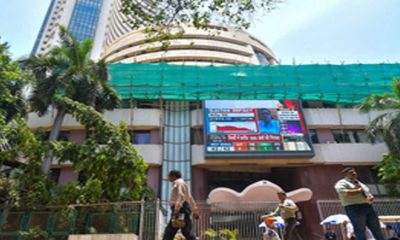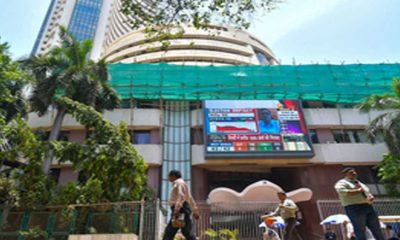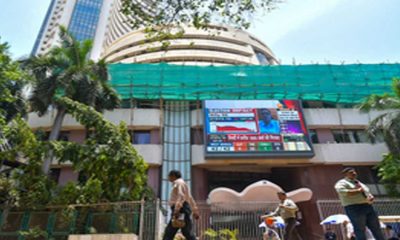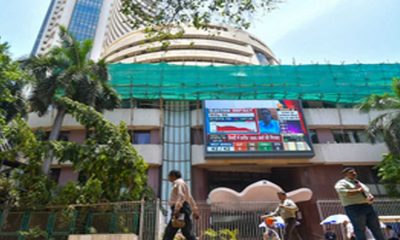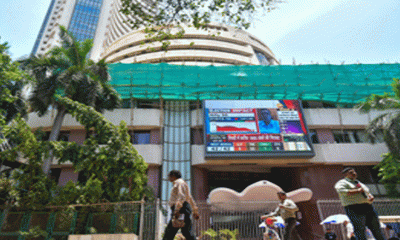Business
Sensex, Nifty jump over positive development on India-US trade talks
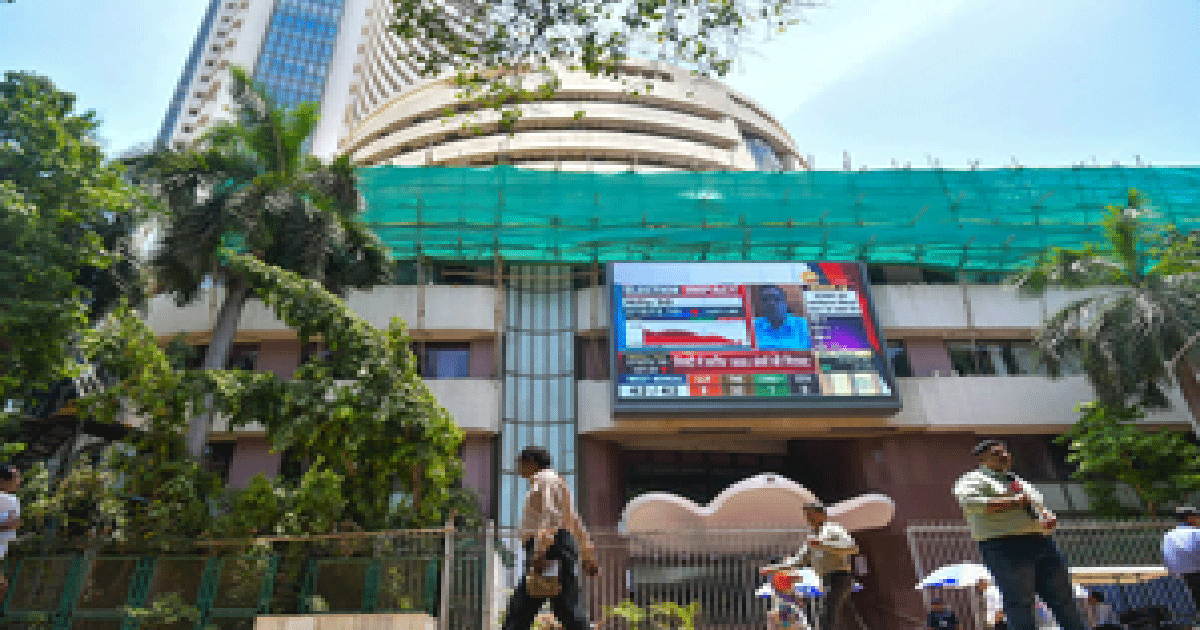
Mumbai, Sep 10: The Indian benchmark indices opened higher on Wednesday, on the back of promising developments in the US-India trade discussions along with strong overnight global cues.
US President Donald Trump’s initiative to improve India-US relations and Prime Minister Narendra Modi’s positive response to the same is a positive cue for the Indian market.
The Sensex was up 334 points or 0.41 per cent at 81,435 in the early morning trade, and the Nifty was up 106 points or 0.43 per cent at 24,975.
The broadcap indices made strong gains, as Nifty Midcap 100 inched up by 0.73 per cent, and the Nifty Small cap 100 moved up 0.71 per cent.
In the Nifty pack, Larsen and Toubro, Kotak Mahindra, Dr Reddys Labs and TCS were the major gainers. The major losers were Hero Motocorp, Maruti Suzuki, Tata Steel and Hindalco.
Among sectoral indices, Nifty IT, the top gainer, jumped 1.88 per cent. Nifty PSU bank and Nifty Realty were the other major gainers. Only Nifty Auto (down 0.33 per cent) and Nifty Consumer durables were in the red.
Nifty on Tuesday faced resistance near the 24,900 level for the second consecutive session. The index formed a small green candle with a long lower shadow on the daily chart, reflecting ongoing consolidation and intraday volatility.
“Nifty continued its upward journey yesterday, rising for the fifth consecutive session and closing at a two-week high. By closing above 24791, Nifty managed to reclaim its level above 50 DEMA. The index has now decisively surpassed its 5, 10, 20, and 50-day DMAs, which is a bullish signal on short-term charts,” said Devarsh Vakil, Head of Prime Research at HDFC Securities.
According to market analysts, buying interest is visible at lower levels, and the 24,900–25,000 zone continues to act as a stiff hurdle. Immediate support is placed at 24,620, and as long as the index trades below 25,000, some consolidation or mild weakness may persist, they said.
US markets made strong gains overnight as the Dow Jones Industrial Average inched up 0.43 per cent, while the Nasdaq advanced by 0.37 per cent and the S&P 500 gained 0.27 per cent. The rally was driven by expectations for Federal Reserve rate cuts following a sharp downward revision to US job data.
The Asian markets were firmly in green during the morning session. China’s Shanghai index advanced 0.17 per cent, and Shenzhen added 0.24 per cent. Japan’s Nikkei was up 0.6 per cent, while Hong Kong’s Hang Seng Index added 0.98 per cent. South Korea’s Kospi inched up 1.55 per cent.
On Tuesday, foreign Institutional Investors (FIIs) snapped their 11-day selling streak by purchasing equities worth Rs 2,050 crore, while domestic institutional investors (DIIs) net bought shares worth Rs 83 crore.
Business
Welfare of India’s farmers is top priority for Govt: PM Modi
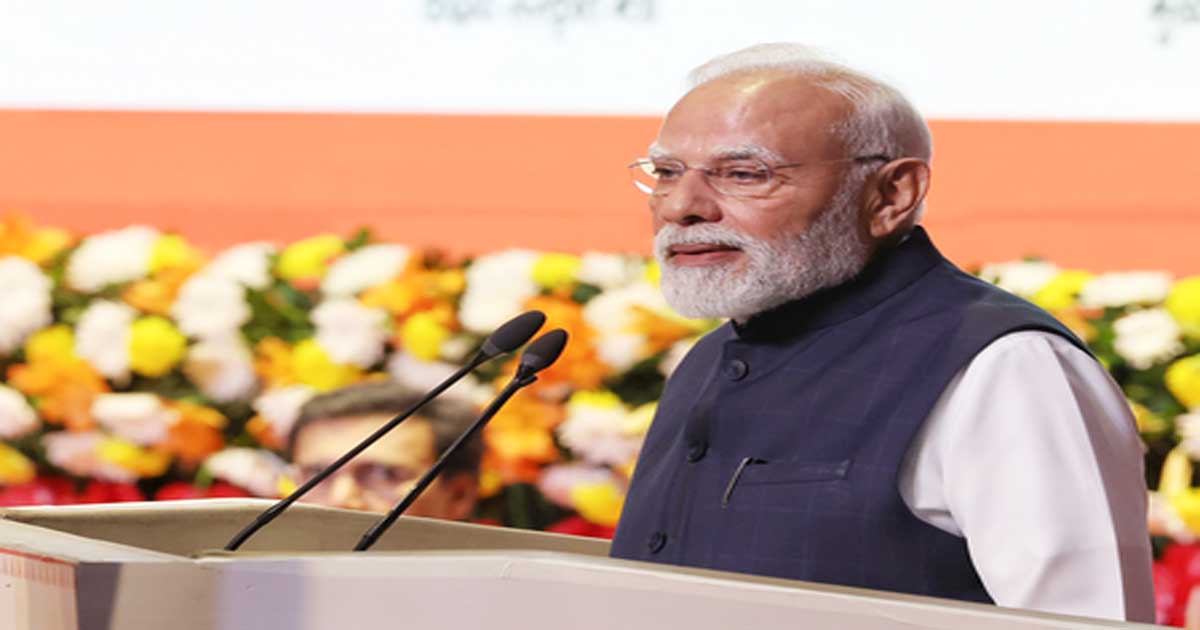
New Delhi, Oct 1: Prime Minister Narendra Modi said on Wednesday that the welfare of the country’s farmers, who play a vital role in building a developed India, is a top priority for his government.
“To this end, the decision to increase the Minimum Support Price (MSP) for rabi crops has been taken. While this will strengthen our food security, it will also benefit our farmer brothers and sisters,” the Prime Minister said in a post on X.
He was referring to the Cabinet decision taken on Wednesday to increase the MSP for rabi crops for the 2026-27 marketing season to ensure remunerative prices to farmers for their produce.
The highest increase in MSP has been announced for Safflower at Rs 600 per quintal, followed by Lentil (Masur) at Rs 300 per quintal. For rapeseed and mustard, gram, barley, and wheat, there is an increase of Rs 250 per quintal, Rs 225 per quintal, Rs 170 per quintal and Rs 160 per quintal, respectively.
The Prime Minister further stated: “We are leaving no stone unturned to ensure the welfare of our farmer brothers and sisters across the country. In this regard, our government has approved the Mission on Self-Reliance in Pulses. While this historic initiative will boost the production of pulses, it will also strengthen our resolve for self-reliance.”
The Union Cabinet, chaired by the Prime Minister, on Wednesday approved the Mission for Aatmanirbharta in Pulses with a financial outlay of Rs 11,440 crore. The landmark initiative aimed at boosting domestic production and achieving self-sufficiency in pulses will be implemented over a six-year period from 2025-26 to 2030-31.
The Pulses Mission is expected to benefit around 2 crore farmers with the supply of better seeds, post-harvest infrastructure and 100 per cent assured procurement of Tur, Urad and Masoor pulses from growers at the Minimum Support Price during the next 4 years, according to an official statement.
Pulses hold special importance in India’s cropping systems and diets. India is the world’s largest producer and consumer of pulses. With rising incomes and standard of living, pulse consumption has increased. However, domestic production has not kept pace with demand, leading to a 15-20 per cent increase in pulse imports.
In another post on X, PM Modi highlighted a Cabinet decision on the decision on widening and upgradation of the Kalibor-Numaligarh section of NH-715 in Assam.
“A historic decision for Assam and the Northeast! The Cabinet decision on widening and upgradation of the Kalibor-Numaligarh section of NH-715, including an elevated corridor with wildlife-friendly measures in the Kaziranga stretch, will boost development as well as ensure animal safety. Tourism to Kaziranga will receive a big boost,” the Prime Minister wrote.
He also took to Twitter to underline the Cabinet’s approval for Phase-III of the Biomedical Research Career Programme, which “will nurture scientific talent, support fellowships, collaborative grants and build world-class biomedical research capacity across India.”
Business
Cabinet gives go-ahead for Rs 11,440 crore plan to achieve self-reliance in pulses
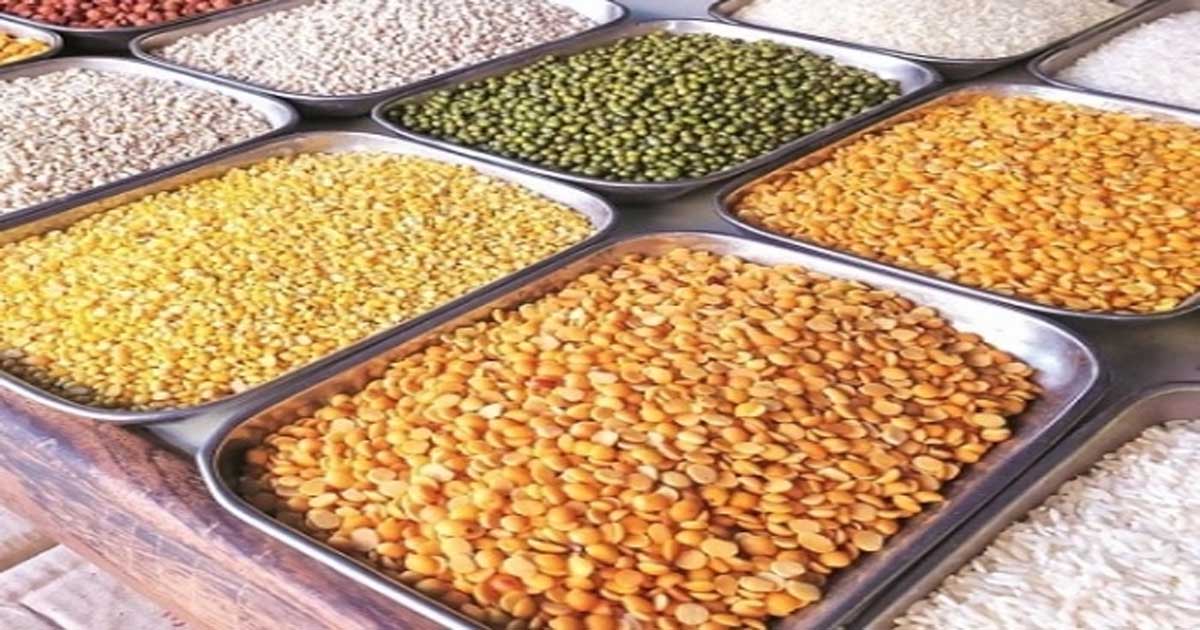
New Delhi, Oct 1: The Union Cabinet, chaired by Prime Minister Narendra Modi, on Wednesday approved the Mission for Aatmanirbharta in Pulses with a financial outlay of Rs 11,440 crore.
The landmark initiative aimed at boosting domestic production and achieving self-sufficiency in pulses will be implemented over a six-year period from 2025-26 to 2030-31.
The Pulses Mission is expected to benefit around 2 crore farmers with the supply of better seeds, post-harvest infrastructure and 100 per cent assured procurement of tur, urad, and masoor pulses from growers at the Minimum Support Price during the next 4 years, according to an official statement.
Pulses hold special importance in India’s cropping systems and diets. India is the world’s largest producer and consumer of pulses. With rising incomes and standard of living, pulses’ consumption has increased. However, domestic production has not kept pace with demand, leading to a 15–20 per cent increase in pulses imports.
To make improved varieties widely available, 126 lakh quintals of certified seeds will be distributed to pulse-growing farmers, covering 370 lakh hectares by 2030-31.
The Mission also seeks to expand the area under pulses by an additional 35 lakh hectares by targeting rice fallow areas and other diversifiable lands, supported by promoting intercropping and crop diversification. For this, 88 lakh seed kits will be distributed free of cost to the farmers.
To reduce this import dependency, meet rising demand, maximise production, and enhance farmers’ income, a 6-year “Mission for Aatmanirbharta in Pulses” was announced in the FY 2025-26 Budget. The Mission will adopt a comprehensive strategy covering research, seed systems, area expansion, procurement, and price stability.
The emphasis will be placed on developing and disseminating the latest varieties of pulses which are high in productivity, pest-resistant and climate-resilient. Multi-location trials will be carried out in major pulse-growing states to ensure regional suitability.
By 2030-31, the Mission is expected to expand the area under pulses to 310 lakh hectares, increase production to 350 lakh tonnes, and raise yield to 1130 kg/ha. Alongside productivity gains, the Mission will generate significant employment.
In addition, to ensure availability for premium quality seeds, states will prepare five-year rolling seed production plans. The breeder seed production will be supervised by the ICAR Foundation, and certified seed production will be done by state and central level agencies, and closely tracked through the Seed Authentication, Traceability & Holistic Inventory (SATHI) portal.
This will be complemented by convergence with the soil health programme, Sub-Mission on Agricultural Mechanisation, balanced fertiliser use, plant protection, and extensive demonstrations by ICAR, KVKs, and state Agriculture Departments to promote best practices.
Capacity building of farmers and seed growers will be taken up through structured training programmes to promote sustainable techniques and modern technologies.
To strengthen markets and value chains, the Mission will help develop post-harvest infrastructure, including 1,000 processing units, thereby reducing crop losses, improving value addition, and increasing farmer incomes. A maximum subsidy of Rs 25 lakh will be available for setting up processing and packaging units.
The Mission will adopt a cluster-based approach, tailoring interventions to the specific needs of each cluster. This will enable more effective allocation of resources, enhance productivity, and promote geographic diversification of pulse production.
A major feature of the Mission will be to ensure maximum procurement of tur, urad, and masoor under the Price Support Scheme (PSS) of PM-AASHA. NAFED and NCCF will undertake 100 per cent procurement in participating states for the next four years from farmers who register with these agencies and enter into agreements.
Additionally, to safeguard farmer confidence, the Mission will establish a mechanism for monitoring global pulse prices.
The mission seeks to achieve the goal of Atmanirbharta (self-reliance) in pulses, reduce import dependency and conserve valuable foreign exchange while boosting farmers’ incomes. This mission will also accrue significant environmental benefits in the form of climate resilient practices, improved soil health and making productive use of crop fallow areas.
Business
MPC decisions to further increase credit flow, promote inclusive growth: Bankers
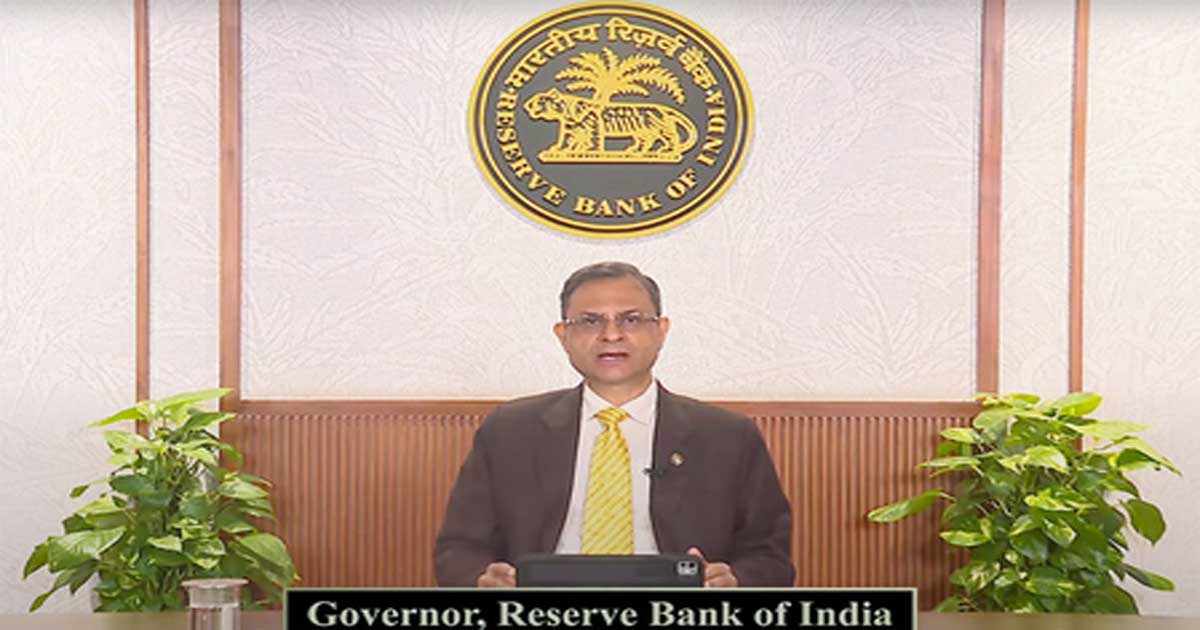
New Delhi, Oct 1: Bankers on Wednesday welcomed the Reserve Bank of India’s (RBI) decision to maintain the repo rate at 5.5 per cent with a neutral stance, saying the move reflects a balanced approach in supporting growth and ensuring price stability.
A neutral stance requires neither stimulation nor curbs on liquidity as it strikes a fine balance between controlling inflation without hurting growth.
According to Binod Kumar, MD and CEO of Indian Bank, the RBI MPC’s stable policy fosters predictability for customers, translating to predictable EMIs and timely access to credit, which aids current consumption plans.
“This stability, along with lowering the risk weight on MSME and residential real estate, will boost demand in this sector. This supports broader economic objectives, including the ongoing efforts to internationalise the Rupee and propel India’s trajectory towards developed country status,” he said in a statement.
The RBI also raised its projection of India’s GDP growth rate to 6.8 per cent for 2025-26 from 6.5 per cent earlier.
Ajay Kumar Srivastava, Managing Director and CEO, Indian Overseas Bank, said with inflation under control, aided by easing of food prices and GST rationalisation, the upward revision of GDP growth to 6.8 per cent for FY26 showcases resilience of the Indian economy despite global volatility.
“For the banking sector, measures set towards regulatory initiatives such as proposed risk-based deposit insurance premiums, easing of risk weights for MSME and residential real estate lending, and enabling framework for corporate acquisition and capital market financing is expected to further increase credit flow in the market and promote inclusive growth,” said Srivastava.
Furthermore, the focus on expanding bouquet of services for basic bank savings deposit accounts through mobile and internet services will also have positive impact on consumers, he added.
According to Rajosik Banerjee, Partner and Deputy Head, Risk Advisory, and Head – Financial Risk Management, KPMG in India, said RBI’s monitory policy calls out important measures for strengthening the resilience and competitiveness of the Indian banks.
This includes issuance of much awaited Expected Credit Loss (ECL) framework applicable to all Scheduled Commercial Banks (excluding Small Finance Banks (SFBs), Payment Banks (PBs), Regional Rural Banks (RRBs)) and All India Financial Institutions (AIFIs) with effect from April 1, 2027 with a glide path (till March 31, 2031) to smoothen the one-time impact of higher provisioning.
“Additionally, there is a step towards moving towards revised ‘Basel III’ capital adequacy norms effective April 2027. And finally moving towards the ‘Standardized Approach for Credit Risk’, proposing lower risk weights on certain segments are expected to reduce the overall capital requirements,” explained Banerjee.
-

 Crime3 years ago
Crime3 years agoClass 10 student jumps to death in Jaipur
-

 Maharashtra12 months ago
Maharashtra12 months agoMumbai Local Train Update: Central Railway’s New Timetable Comes Into Effect; Check Full List Of Revised Timings & Stations
-

 Maharashtra12 months ago
Maharashtra12 months agoMumbai To Go Toll-Free Tonight! Maharashtra Govt Announces Complete Toll Waiver For Light Motor Vehicles At All 5 Entry Points Of City
-

 Maharashtra1 year ago
Maharashtra1 year agoFalse photo of Imtiaz Jaleel’s rally, exposing the fooling conspiracy
-

 National News12 months ago
National News12 months agoMinistry of Railways rolls out Special Drive 4.0 with focus on digitisation, cleanliness, inclusiveness and grievance redressal
-

 Maharashtra11 months ago
Maharashtra11 months agoMaharashtra Elections 2024: Mumbai Metro & BEST Services Extended Till Midnight On Voting Day
-

 National News1 year ago
National News1 year agoJ&K: 4 Jawans Killed, 28 Injured After Bus Carrying BSF Personnel For Poll Duty Falls Into Gorge In Budgam; Terrifying Visuals Surface
-

 Crime12 months ago
Crime12 months agoBaba Siddique Murder: Mumbai Police Unable To Get Lawrence Bishnoi Custody Due To Home Ministry Order, Says Report



